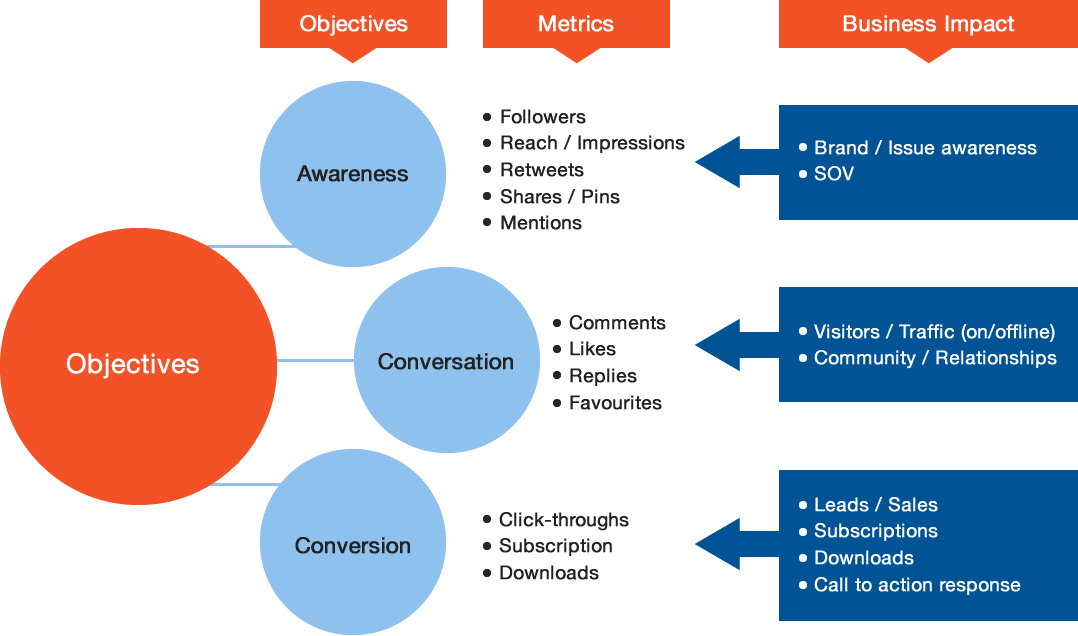When it comes to designing a social media strategy – which, let’s face it, your business absolutely needs – there are two fundamental details you must have:
1. A clear focus on objectives
2. A set of metrics directly related to the set objectives
Any strategy worth its salt has clear and defined objectives; without them, it’s like driving with no destination. But objectives alone are not enough. You need to have the proper metrics in place, the data and statistics that will demonstrate just how close to achieving your objectives you are. As Megan Headley, research director at TrustRadius, says, “The ability to manage, measure, and analyze social activities is becoming a key element of success in certain areas.”
Unlike traditional media, which has always grappled with quantitative success metrics, social media has a strong measurable component to it: likes, shares, retweets are all countable acts. Social media is also supported by many technological tools and easy-to-measure analytics, making it easy for you to track exactly what you want.
The problem with social media, in fact, is that there are just too many metrics to choose from. There are several social channels (Facebook, Twitter, Instagram, Pinterest, to name a few), each of which with its own defined metrics. In such a world of abundance, how to stay focused? How to not get seduced by numbers and interesting stats? Most importantly, how do you normalize your measurement across different platforms to draw an overall conclusion in line with your social media metrics?
After scouring through tons of available literature on this topic (and there is lot out there), and combining that with our experience helping clients define and measure their social media efforts, I’ve come up with this simple matrix below that avoids the metrics clutter and keeps the focus firmly on the objectives.
Broadly speaking, social media efforts have three main objectives. Almost any goal that you have could be slotted under one of these three objectives:
1. Awareness – You want more and more people to know of your activity, event, news, etc.
2. Conversation – You want to build a community, engage with them, and get them talking.
3. Conversion – You want to motivate your community to take an action, be it subscribing, downloading, taking surveys, or, ultimately, turning into a customer.
After you decide which social efforts will contribute best to these objectives, choosing the right social media metrics to keep track of them is easier than you think. The matrix highlights some key metrics respective to each objective. And an added advantage is that it doesn’t matter which platform you are considering, you can find the social media metrics that speak to the objectives.
Let’s say your main objective is creating awareness, then what you want to know is how far and wide your message reached. Followers, likes, shares, re-tweets, reach, and impressions are the social media metrics that will help you get an answer. If awareness is your primary objective, then don’t get bogged down by conversation or conversion metrics. Determining the right metrics for your social media objectives is a must; it will provide clear and tangible results, and make the most of your measurement dollars.
How are you currently measuring the success of your social media strategy?







